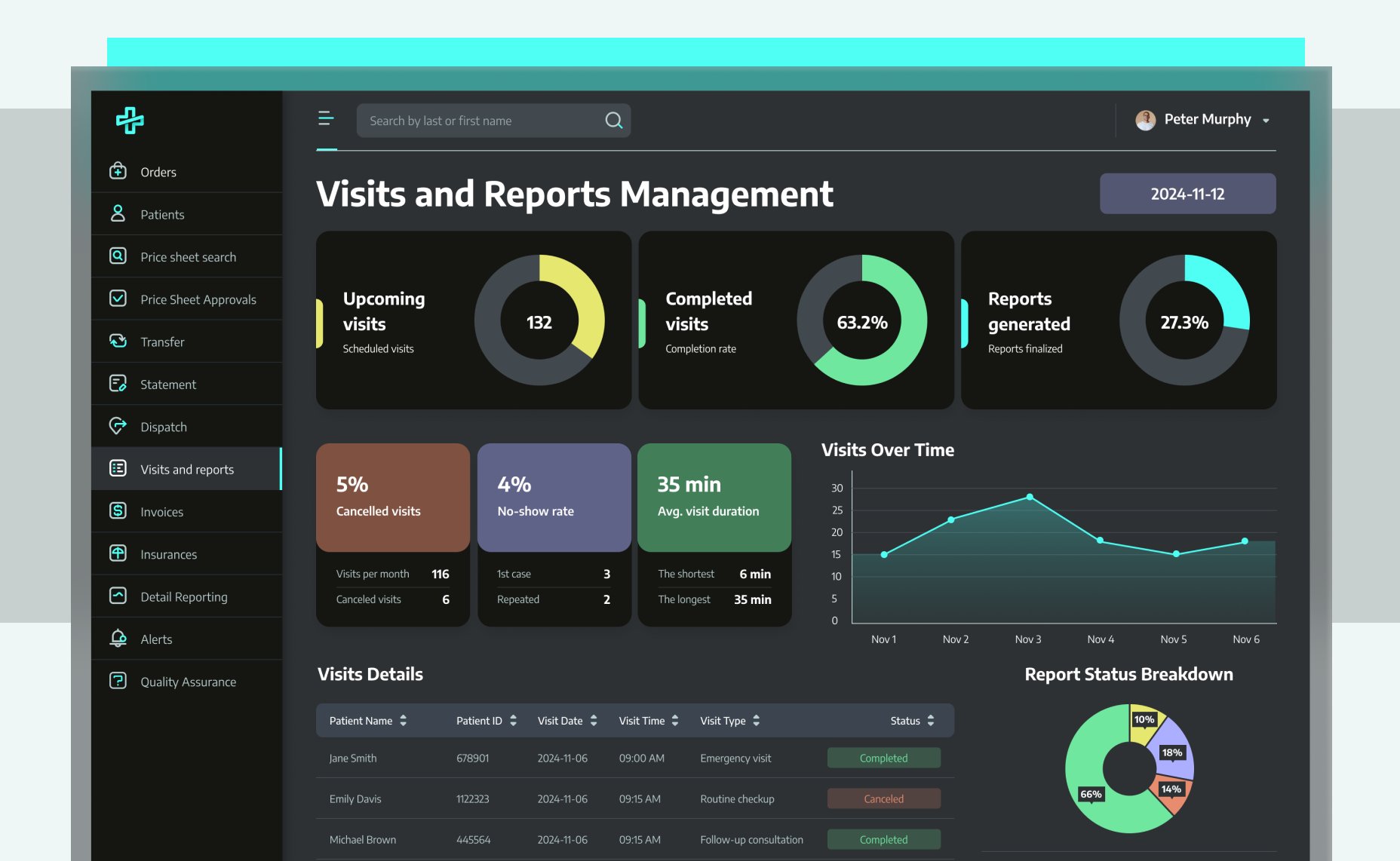Nowadays, telemedicine has moved from being an experimental add-on to becoming the default entry point for millions of patients. Yet, even as virtual visits become common, many clinics still face the same old frustrations: patients waiting in digital queues, reception teams overwhelmed by repetitive questions, and a sense of detachment compared to the warmth of walking into a physical practice.
Enter the AI avatar: not just a chatbot with a friendly face, but an intelligent digital concierge that transforms the “waiting room” experience into a 24/7 always-on front door. Instead of staring at a loading screen, patients are greeted, guided, and supported by an avatar that combines natural conversation with smart automation.
In this article, you’ll learn:
- Why the virtual waiting room feels broken and the friction points patients and clinics face.
- What AI avatars are and how they act as digital concierges, not just chatbots.
- How avatars transform waiting into care, from greetings to paperwork automation and education.
- The key benefits for patients and doctors including 24/7 availability, personalization, and reduced anxiety.
- Real-world use cases of AI avatars across primary care, mental health, chronic disease management, and specialty practices.
- Challenges and considerations, including trust, ethics, accuracy, and data privacy.
- What the future holds for AI-powered front doors in telemedicine: wearables, proactive outreach, omnichannel presence, and continuous learning.
- How Mitrix supports healthcare providers with tailored AI avatar solutions, EMRs, insurance management, and HIPAA-compliant workflows.
From queue to conversation: why the virtual waiting room feels broken
In fact, traditional telemedicine platforms borrowed heavily from the in-person clinic model. You log in, check in, and wait for your turn. Sure thing, it works, but it doesn’t feel modern. Three key friction points keep showing up:
- Dead air. Patients sit idle in a digital lobby with little information, often unsure how long they’ll wait or whether their session is working.
- Repetitive admin tasks. Staff spend hours answering basic questions (“How do I upload my insurance card?” or “Is this covered by my plan?”).
- Missed opportunities. Patients often abandon visits or fail to follow up because no one guided them past the “entry stage.”
In all fairness, if e-commerce sites treated customers this way, sales would collapse. So why should modern healthcare be different? Patients expect telemedicine to be just as smooth, responsive, and personalized as ordering food or booking a ride.
Meet the AI avatar: the always-on digital concierge
An AI avatar is more than a chatbot. It blends conversational AI with a visual, often human-like interface, bringing personality, empathy, and real-time responsiveness into the patient journey. Think of it as your clinic’s front desk, intake nurse, and patient educator available any day of the week.
Here’s what sets AI avatars apart from static waiting rooms:
- Face and voice interaction. Patients can see and hear a lifelike avatar, making the encounter feel more personal and less transactional.
- Context-aware intelligence. Unlike scripted bots, AI avatars pull data from medical records, scheduling systems, and insurance providers to give tailored responses.
- Multilingual accessibility. Patients can interact in their preferred language, widening access and improving trust.
- Proactive guidance. Instead of waiting passively, the avatar explains the next steps, checks eligibility, and prepares patients for the consultation.
In short: no more dead air. Every moment before the consultation becomes useful, engaging, and supportive.
How AI avatars turn waiting into care
Let’s break down how AI avatars change the telemedicine waiting room into a real “front door” for patient care.
1. Greeting patients like a human receptionist
First impressions matter. Instead of a blank screen, patients see a friendly avatar that greets them, confirms their appointment, and offers guidance. This reduces anxiety, especially for first-time users or older patients who are less comfortable with tech.
2. Automating intake and paperwork
The avatar can collect symptoms, upload documents, and validate insurance, automatically syncing with the EHR (Electronic Health Record). What used to take 15 minutes of manual data entry now happens conversationally in under five.
3. Setting expectations in real time
All patients hate uncertainty. The avatar provides real-time updates: “Your doctor will join in 6 minutes,” or “Please test your microphone while you wait.” This prevents drop-offs and builds trust.
4. Patient education before the visit
Instead of scrolling through Instagram while waiting, patients can use that time to learn. The avatar can explain the condition they’re being seen for, offer pre-visit instructions, or even prepare a list of questions for the doctor.
5. Handling post-consultation follow-up
Even after the appointment, the avatar stays available. It can check in with reminders (“Don’t forget to take your prescription”), offer mental health check-ins, or schedule the next visit, all without overloading staff.
Benefits for patients
In 2025, patients aren’t looking for futuristic tech. Instead, they want care that feels easy, personal, and reliable. AI avatars deliver on all three fronts:
- 24/7 availability. No more “office hours.” Support is always on, reducing stress.
- Personalized interactions. Conversations adapt to the patient’s history, language, and needs.
- Reduced anxiety. A familiar avatar presence feels less intimidating than a faceless app.
- Shorter wait times. Because paperwork and intake are handled up front, the consultation starts faster.
- Accessibility. Elderly patients or those with low digital literacy get voice-based help instead of clunky forms.
In essence, patients feel cared for before the doctor even joins the call: arriving at their consultation calmer, more prepared, and already supported, which helps the doctor focus on care instead of catching up on logistics.
Benefits for clinics and providers
All in all, AI avatars improve patient experience, lighten the load for staff, and increase clinic efficiency.
- Reduced admin burden. Repetitive questions and form-filling shift from the staff to the avatar.
- Higher visit completion rates. Patients are less likely to drop off mid-process when engaged.
- Smarter triage. By collecting symptom data, avatars can prioritize urgent cases or route patients properly.
- Better use of clinician time. Doctors enter the visit with pre-collected information, so they spend more time on care, less on admin.
- Scalability. Whether you see 100 patients or 10.000, avatars handle the front door without hiring more staff.
For clinics under pressure to “do more with less,” avatars are a multiplier, not a cost center.
Real-world examples
AI avatars aren’t a distant promise: they’re already transforming care in diverse settings. From primary care to chronic disease management, clinics are using them to reduce friction, improve engagement, and deliver smoother patient experiences.
- Primary care telehealth platforms. Avatars greet patients, run through intake, and flag emergency cases before routing to a doctor.
- Mental health clinics. AI avatars offer calming interactions, explain treatment options, and provide CBT-based exercises while patients wait.
- Specialty practices. Dermatology apps let patients upload photos and chat with avatars that explain how to prepare images for a doctor’s review.
- Chronic condition management. For diabetes or hypertension, avatars check logs (blood sugar, blood pressure) during intake and provide real-time feedback.
These examples show avatars are not futuristic: they’re already in play, reducing friction and improving outcomes.
Addressing concerns: trust, ethics, and human touch
Of course, healthcare is not customer service. The stakes are higher, and patients’ trust must be protected. AI avatars bring challenges clinics must address:
- Accuracy. An avatar should never give medical advice beyond its scope. Guardrails and disclaimers are essential.
- Transparency. Patients should know they’re talking to an AI, not a human. Trust erodes if this is hidden.
- Data privacy. HIPAA compliance and encryption aren’t optional; they’re foundational.
- Equity. Avatars should be designed inclusively to serve diverse populations, not just the digitally savvy.
Handled responsibly, avatars complement (not replace, surely) the clinician’s role. They free humans from repetitive tasks so empathy and expertise shine where it matters most.
Looking ahead: the future of the digital front door
The trajectory is clear: the waiting room as we know it is disappearing. What once was a space for clipboards, old magazines, and long silences is being reimagined into something dynamic, digital, and patient-first. AI-powered avatars are stepping up as the new frontline of care, transforming the first touchpoint into an active, helpful experience rather than wasted time.
- Integrated with wearables. Avatars will check vitals from smartwatches before visits.
- Proactive outreach. Instead of waiting for patients to log in, avatars will nudge them to schedule follow-ups or refill prescriptions.
- Omnichannel presence. Whether on a clinic app, WhatsApp, or even a smart TV, the avatar will be accessible everywhere.
- Continuous learning. With every interaction, avatars get smarter, improving triage, personalization, and patient engagement.
The technology, however powerful it may be, won’t replace doctors. It’s about creating a front door that’s always open, always welcoming, and always efficient. A digital extension of the clinic that reduces friction, builds trust, and ensures patients feel cared for every step of the way, even before the consultation begins. The future of care is all about arriving, being understood, and moving forward with confidence.
How Mitrix can help
At Mitrix, we specialize in building AI systems that bring human-like intelligence into real-world workflows. For healthcare organizations, this means:
- Developing AI avatars that act as patient concierges.
- Integrating avatars with EHRs, scheduling platforms, and insurance systems.
- Ensuring HIPAA-compliant data handling and security.
- Customizing avatars for multilingual, culturally sensitive interactions.
- Continuously monitoring and optimizing performance.

Mitrix healthcare project
For instance, let’s check our healthcare medical record management platform that we developed for our client in the USA. The solution enables healthcare providers to track patient histories, monitor progress, and make informed decisions. It includes:
Medical device catalog
The medical device catalog feature offers a rich database to help users find an exact match for the medical tool they need. Additionally, it enables the specification of medical devices, allowing users to choose and customize features.
Custom EMR
The Custom EMR feature simplifies the processing of custom orders using adjustable rule sets that users can tailor to their specific needs. A standout aspect of our Custom EMR is the ability to create and edit an unlimited number of rules and processes, enabling users to manage insurance requirements with maximum flexibility and precision.
Insurance management
Despite programs like Medicaid and Medicare, patients often struggle to understand their insurance plans due to complicated terms and unclear coverage policies. Our solution eliminates this uncertainty. Integrated with Waystar, the solution lets patients check their insurance plans and determine treatment eligibility in no time.
Visits and reports
The solution tracks patient visits, generates detailed medical device utilization reports, and ensures the setting up of a HIPAA-compliant environment. Additionally, this feature enables the forecasting of staff utilization, helping to prevent staffing shortages during periods of high demand, ensuring cost optimization, and maintaining productivity by employing the right number of staff.
Prescription process
The solution provides an intuitive workflow that enables physicians and patients to efficiently navigate the prescription process with guided workflows for real-time eligibility and coverage determinations.
Key results
- 93% of delivery orders are completed by suppliers within 6 hours.
- 64% faster order creation process achieved by automating patient record entry.
- Up to 25% cost reduction in equipment spending through the use of an analytics system.
- The velocity of settlements has increased twofold, leading to a reduction in floating capital.
As you can see, instead of piecing together chatbots and plugins, Mitrix delivers end-to-end solutions that turn telemedicine into a seamless, patient-first experience. Contact us today to discuss your needs!
Summing up
Fortunately, the days of staring at a blank virtual lobby are numbered. AI avatars transform the telemedicine waiting room into an active, supportive, 24/7 front door. Patients feel guided and reassured, providers gain efficiency, and clinics scale without sacrificing care quality.
Healthcare is about human connection, and ironically, it’s the right AI avatar that helps restore that connection in digital care. Done well, it doesn’t replace the doctor’s voice: instead, it amplifies it, ensuring every patient’s journey begins with clarity, empathy, and trust.


